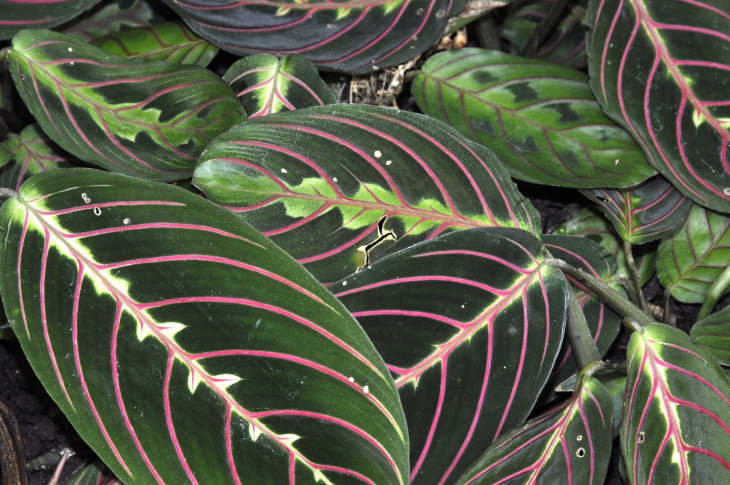The Pinterest Plant Trend That’s Anything But Boring

If 2017 was the year of the plant lady, then 2018 shows no signs of that trend slowing down. Though, as our thumbs get greener, our desire to branch out gets stronger, and plain plants will no longer suffice. According to Pinterest, this is the next hot trend in houseplants.
Pinterest reports that Pins relating to “patterned plants” are up 533%, so forget fiddle leaf figs. The next “it” plant is the prayer plant, or maranta, known for its colorfully veined and highly patterned leaves. Prayer plants get their name from the fact that the leaves are flat during the day, and fold upwards in the evening.
Prayer plants are native to Brazilian rainforests, but are adaptable to a home environment. Here’s how best to care for them, according to my vintage copy of the New York Times Book of House Plants:
Place plant where it gets partial shade and keep soil moist. Frequent misting helps to maintain needed high humidity…[They] grow best in soil enriched with peat or compost.
And good news, pet parents: Maranta varieties are non-toxic to dogs, cats, and horses (and check out more more pet-safe plants here).
Prayer plants aren’t the only bold beauties on the rise for 2018; in the same family as prayer plants are rattlesnake plants, also native to the tropical Americas, and known for their distinctive wavy leaves with distinctive patterns and a deep violet-red underneath.
Known by the scientific name Calathea, according to 1976’s House Plants, it’s a pretty good option for beginners. “Although it still needs light and humidity, this is perhaps the easiest species to grow indoors. The foliage should be regularly washed and sprinkled, but it appears to be less liable to red spider attacks than other species of the same genus.” We like the sound of that.
Plant parents, are you down for patterned plants? Tell us in the comments.